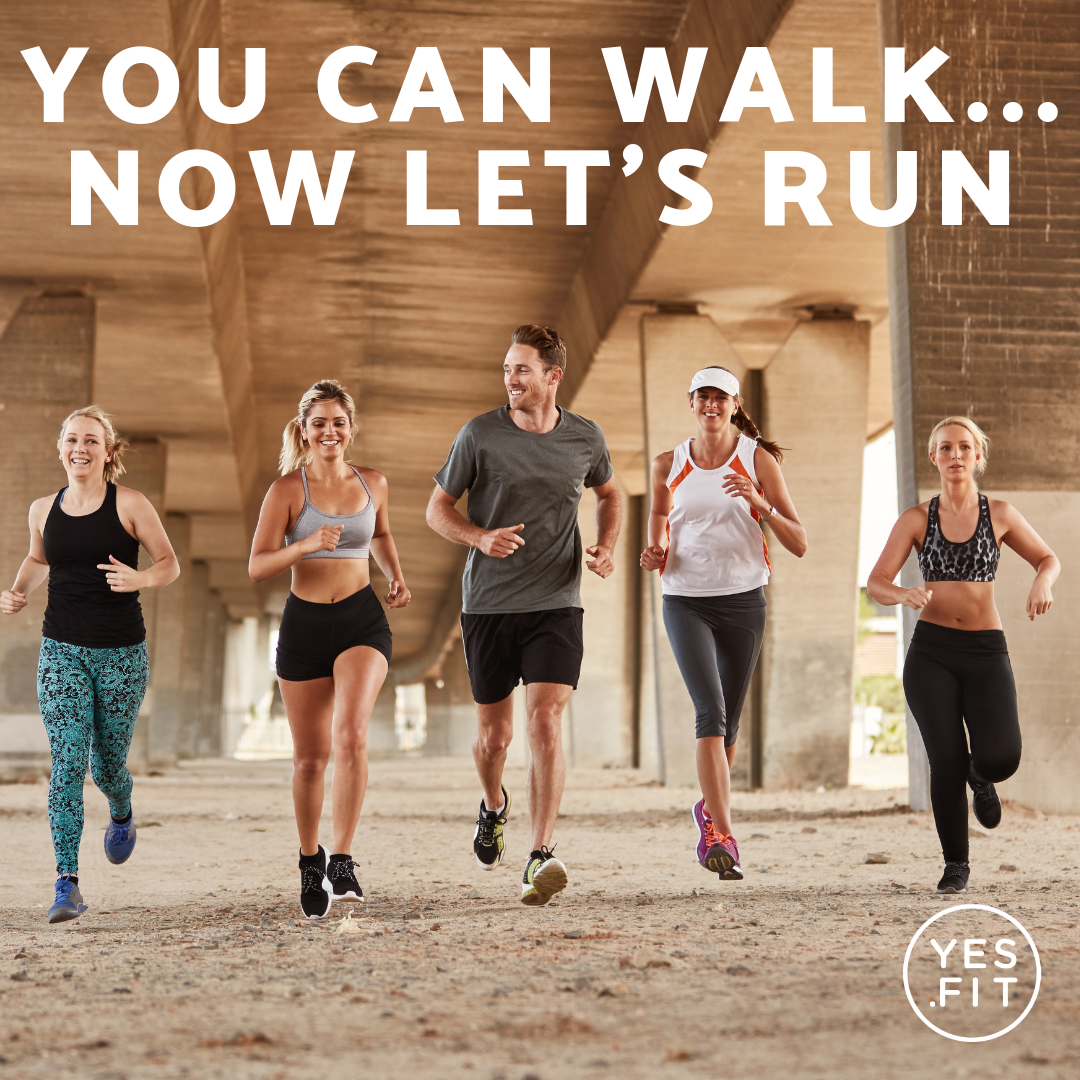You Can Walk… Now Let’s Run!

Looking to run your first 5K or half marathon but don’t know where to begin? Don’t fret, you can learn to run, even if you have never run before. Training is within your reach as long as you remember a few simple rules; learn goal setting techniques, train in intervals and remember that walking to run can help you make it to your first race.
Walking to run is the first step in training for those who have never before run as a sport. Just as in weight training, you must lift five pounds before you lift fifty, you must train your body to go the distance of a marathon. Proper training is the best way to condition your body, stay motivated and avoid injury. Even if your mind is ready to run, you must train your muscles, bones and ligaments to endure the stress of running.
Benefits of Walking and Running
Everyone has different reasons and goals for exercising. But when it comes to running, the health benefits go beyond getting fit or weight loss. Running is not only a sport, it’s a time for solitude, meditation and self-improvement. It’s learning how to overcome personal obstacles and reach goals. At the same time, it’s a sport in which you interact with others by going out in nature and meeting other runners.
If it is difficult to meet others on the same path, especially for those living the city life, modern technology can help. We are fortunate to live in a world where technology can help guide and train us and meet other enthusiasts in the process.
Racing apps, or virtual runs such as Yes.fit, have their own Facebook groups and online races where runners meet and cheer each other on, give advice and motivate each other. So, no matter who you are or where you reside, you can enjoy running with a community around the world.
Goal Setting
Goal setting is the first step to begin training. Even if you currently walk without running, set a goal to reach. This will help you set a time frame for your interval training, which we will get to, and give you a reason to train.
Write out your plan and keep a journal. Planning your training goals for each week could include such items like which days you’ll train or help you plan meals for your training diet. A journal is where you record important information regarding your training such as; vital signs, pain, or how food affected you. Information like this can help you identify which foods are helping and which might be interfering with your training, help you stay on top of injuries or identify health issues.
By writing out a weekly plan and posting it where you can see it, you have a quick reminder and visual outline of your goals. Your weekly plan might include:
- Daily diet
- Training days
- Strength Training to build muscle
- Duration of walking and/or running each training day
- Reminder to update your journal
- End of week goals
Not everyone wants to sign up for a marathon or even a half marathon, and that’s okay. No matter if your reason is shyness or no access to races near you, technology is your friend, once again. Using a fitness apps like Yes.Fit can help you to set goals.
Racers from around the world use apps like this to walk or run virtual races, including short races for beginners to marathons for experienced athletes. These are programs in which you sign up for a race then complete where and when you choose. The pressure to compete with others is off, but you can keep track of your personal fitness goals and win tee shirts and medals in the process.
Interval Training
And now to the good stuff. But first, it’s always best to check with your doctor before you begin any fitness program. Pay attention to physical sensations, like don’t work through pain but address it, and keep track of your vital signs. As mentioned earlier, a fitness tracker can help monitor as you are working out and keep track of your progress. The following is an example of a typical interval training regimen to transition from walking to running.
1. Begin walking three times each week. Keep a moderate pace if you’ve never done so. Set a goal of 20 minutes and slowly work your way up to 30 minutes by the end of your second week. Move to four times each week by your third week. At this point, graduate to the next stage or stay on this regimen for another week. Monitor your body’s signals and pay attention to what it may be telling you.
2. Integrate running into your walk. Continue your four times each week, but after 10 minutes of walking, step up your pace to a slow jog for 30-60 seconds. After this walk for two or three minutes then jog again for another 30-60 seconds. Continue intervals for up to 15 minutes and then do a “cool down” walk for 5-10 minutes. Remain at this pace for two or three weeks.
3. Run more. Your body should be comfortable and stronger after your initial five or six weeks of your training plan. As you feel comfortable, increase the run time to 90 seconds and then two minutes of walking. Continue this pattern for 15 minutes. If you feel comfortable, reduce the walking intervals workouts to 90 seconds. This stage should last at least two weeks. Visit your doctor if you feel any consistent pains or health issues.
4. Continue warming up with a walk before you run. You may only need to warm up with a five-minute walk at this point. If you feel conditioned and want to go straight to running, try to pull back. Everyone needs to warm up before intense exercise, and by now your workouts should be getting more intense. Move from 90 seconds of run time to two or three minutes. Shorten your walk intervals to 30 seconds, if necessary or don’t use walk intervals.
5. Run and have fun. Now you should be able to run, even if it is a slow jog, for nearly your entire workout. Once you have reached this point, add five minutes each time you train. Consult with others in our running community for advice, if you need. By all means, enjoy yourself.
Ready, Set, Race!
Hopefully you have trained and are ready for your first race. With proper planning, training and attention to your physical and mental health, you have reached your goal and will run your first race. If you haven’t signed up for a race, get a fitness app on your tracker, sign up, and have fun. Start with a small race, if you are unfamiliar with others, to avoid membership fees.
And then ready, set, race and have fun!








